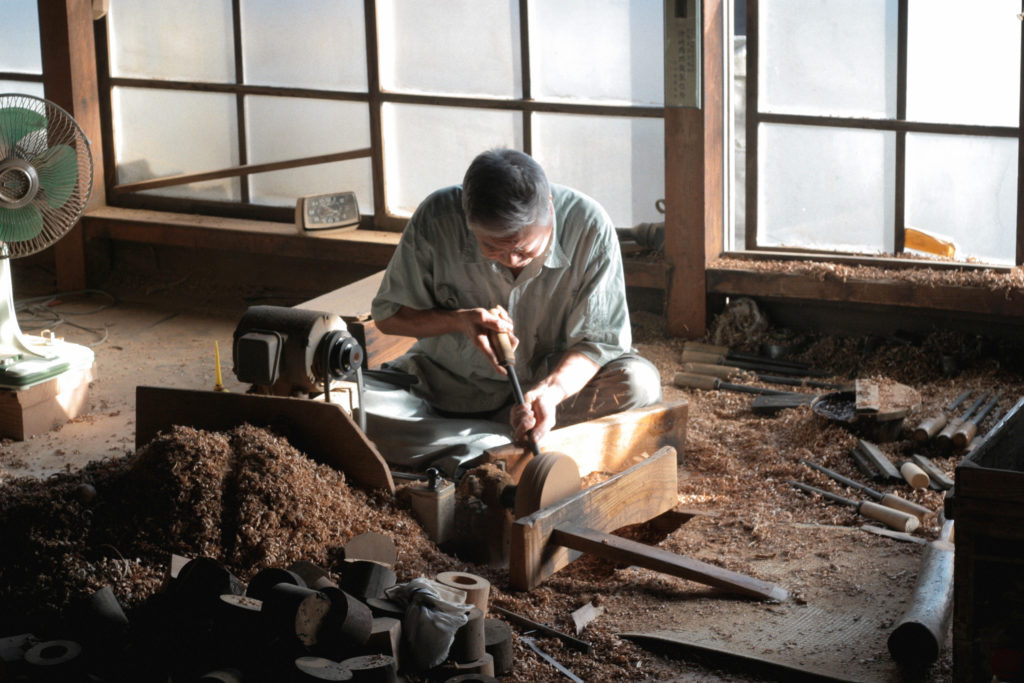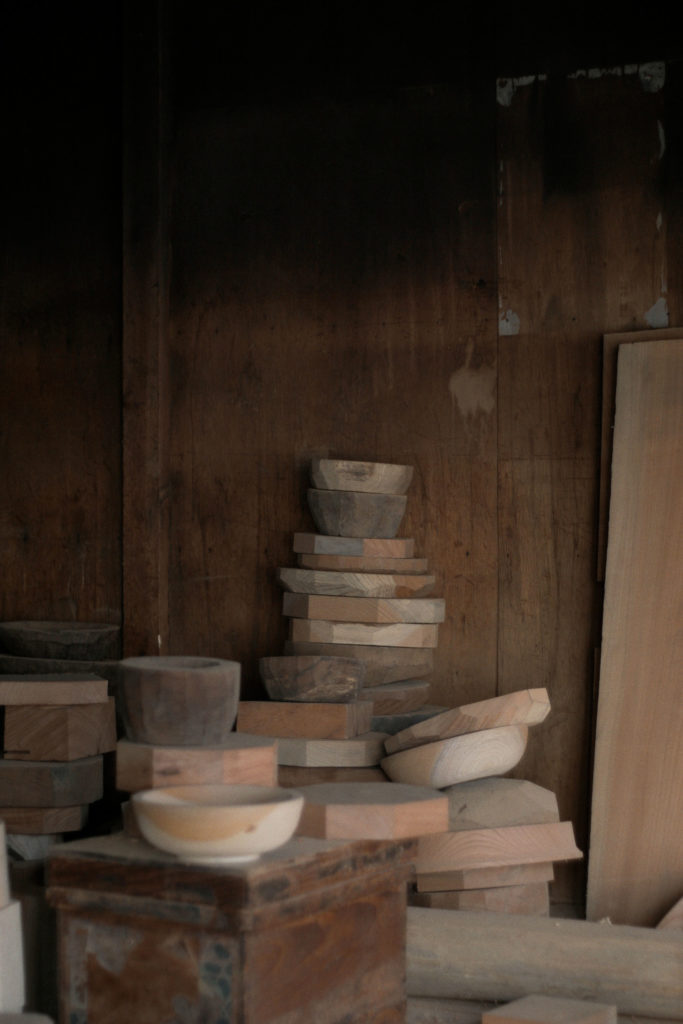Story 02 | Carving wooden cores
Half formed wooden bowls are stacked a dozen high along the walls of 74 year old Mitsuo Ikeshita’s workshop. Late afternoon light crosses a small rural road, and enters through the windows, illuminating piles of sawdust, and Ikeshita sits in the middle of it all. He is carving a wooden bowl form known as a Kiji. For ten hours a day, every day of the year, he sits in this position producing wooden Kiji which will eventually be coated in layer upon layer of Urushii sap by another set of craftsmen.”I imagine the Kiji bowl as a core” says Ikeshita sitting in his workshop.
This “core” is being made for craftsmen who will coat it in layers and layers of Urushii sap. Although these painters are the final link in a long chain of craftsmen they generally act as the designers. They discuss together with the Kiji carvers how the final piece will look and the feeling the bowl should evoke when it is held. “Now the younger craftsmen bring in exact dimensions,” Ikeshita says, seated in one of his Tatami rooms, surrounded by unlacquered Kiji, “but in the old days we would discuss the feeling of the bowl, and work on that understanding.” If the craftsman likes women, he says that they might imagine the bowl as a breast, thinking about the size, age, of the woman, to get the feeling of the shape across. To Ikeshita these discussions are the most essential part of his craft, to get a true sense of what type of bowl the Urushii craftsman wishes to coat in lacquer.

Ikeshita began his career making Kiji when he was 15, almost immediately after being adopted. “But it was years before I could start working with the wood myself,” he says. Working with the wood involves mechanically spinning a half formed bowl and carving it with metal tools. It took Ikeshita years to get the hang of the technique, and to produce the exact type of bowls required by the Urushii craftsmen. “Recently though, I am getting to the place where I feel I can not learn so many new things.”
And now Ikeshita is frustrated about the lack of people to pass his skills on to, and the lack of orders coming in. In his heyday he would be taking orders from up to 60 craftsmen, now only a handful of craftsmen come requesting his bowls. The lack of orders is reflective of a changing world, where plastic replicas have come to meet the same needs which Urushii met. It’s often difficult to tell the difference between a piece of Wajima lacquerware and its plastic copy, but a distinct difference does exist – plastic bowls have no cores. Those cores are evidence of the long chain of hands required to make a perfectly rounded, symmetrical piece of lacquerware, cores which have been passed down and refined over a thousand years.
< PAPERSKY no.40(2012)>












